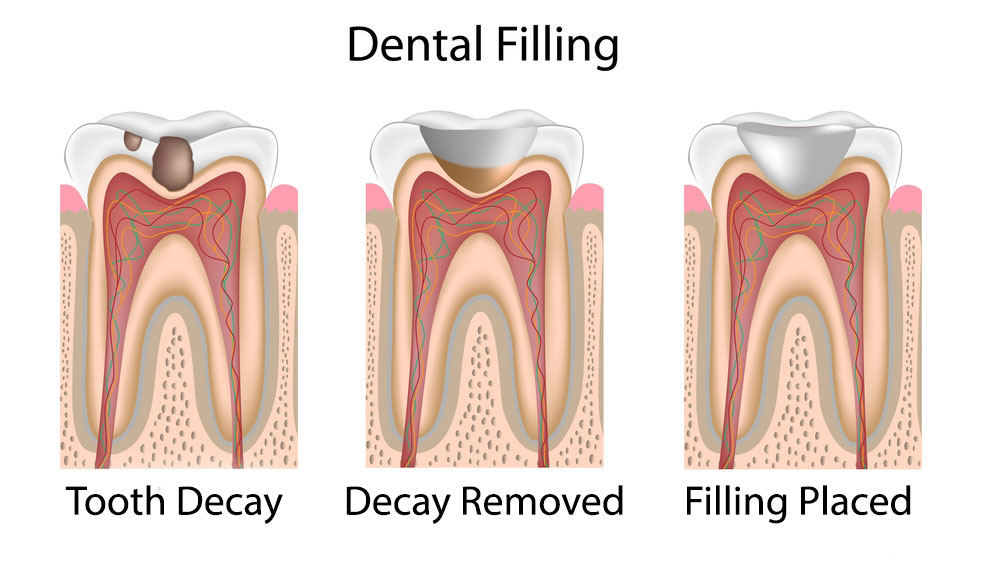Dental Fillings
For small cavities or tooth decay, dental fillings are a common, cost-effective solution
What are Dental Fillings?
Most people will need a dental filling at some point in their lives. Cavities are not always a result of bad oral hygiene. In some cases, the acidity of the mouth can wear on your teeth, making them more vulnerable over time. Fillings are used to treat these cavities and to repair worn down, cracked or broken teeth.
Types of Dental Fillings
Patients can choose the material used to replace the tooth decay
Amalgam
This metal material is known for its strength and longevity. This type of material is extremely durable and less expensive than other dental filling materials. However, some patients don’t feel comfortable using amalgam, as it is less natural looking.
Composite
These fillings are made using synthetic materials that are much more aesthetically appealing. In addition, they are stain-resistant and offer a more natural look and function. Furthermore, composite fillings require less drilling than amalgam fillings, because there is no need to reshape the space as much (in order to securely hold the filling in place). This is because composite fillings are actually bonded to the tooth, providing for further support and strength.
Ionomers
Like composites, are composed of tooth-colored materials, including ground glass and acrylic resins. Ionomers are typically used for fillings near the gum line or tooth root, where biting pressure is not a factor. They are more fragile than dental amalgam, however, more aesthetically appeasing. In order to facilitate strengthened enamel, ionomers release a small amount of fluoride in and around the affected area.
Porcelain
These ceramic fillings generally contain a combination of porcelain, glass powder, and ceramic. Candidates for porcelain fillings are typically those in need of crowns, veneers, onlays, or inlays. Unlike ionomers, porcelain fillings are more durable but can become fractured if exposed to prolonged biting pressures. Ceramic fillings are also highly resistant to staining, making them a popular choice among patients.
What to Expect with Dental Fillings
The process involved with administering a dental filling is quite simple and with the help of a local anesthetic, little to no discomfort or pain should be expected. Once the local anesthetic has set in, work begins with the removal of any tooth decay or damage. Next, the affected tooth and surrounding area is cleaned in order to remove any bacteria. Next, a bonding material is placed on the tooth- which is then followed by the filling material. If the decay is near the root, a liner may be used in order to better protect the nerve. After the filling is in place, the tooth is finished and polish is applied.
Several additional steps are required for tooth-colored fillings. After the decay is removed and the area is properly cleaned, the tooth-colored filling is applied in layers. A special light is used to “cure” or harden each layer. When the multi-layering process is complete, the composite material is shaped, trimmed, and polished.
Dental fillings provide numerous advantages for both decayed and damaged teeth. They help to protect problematic teeth and to impede any further decay or damage. In addition, fillings help to restore function, bite, comfort, look, feel, and smile.

